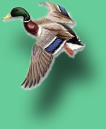 |
|||||
|
|||||
| |
|||||
|
|||||
| 7 | |||||
| Home | Amanos Mtn. | Project Area | List of species 1 / 2 | EEA | CORINE | NATURA2000 | EUNIS | |||||
|
|||||||||||||||||||||||
|
Information
sources:
|
||||||||||||||||||||||||||||||||||||||||||||||||||||||||||||||||||||||||||||||||||||||||||||||||||||||||||||
|
[last
online access: 09.10.2019]
|
||||||||||||||||||||||||||||||||||||||||||||||||||||||||||||||||||||||||||||||||||||||||||||||||||||||||||||
| Key
definition |
||||||||||||||||||||||||||||||||||||||||||||||||||||||||||||||||||||||||||||||||||||||||||||||||||||||||||||
| provided
in 2004 by the
|
||||||||||||||||||||||||||||||||||||||||||||||||||||||||||||||||||||||||||||||||||||||||||||||||||||||||||||
|
NATURA
2000 is the EU ecological network of sites designated by Member
States under the
|
||||||||||||||||||||||||||||||||||||||||||||||||||||||||||||||||||||||||||||||||||||||||||||||||||||||||||||
|
||||||||||||||||||||||||||||||||||||||||||||||||||||||||||||||||||||||||||||||||||||||||||||||||||||||||||||
|
||||||||||||||||||||||||||||||||||||||||||||||||||||||||||||||||||||||||||||||||||||||||||||||||||||||||||||
| The
following information on the NATURA 2000 network, background and aims, was
adopted from the |
||||||||||||||||||||||||||||||||||||||||||||||||||||||||||||||||||||||||||||||||||||||||||||||||||||||||||||
| "What is NATURA 2000? | ||||||||||||||||||||||||||||||||||||||||||||||||||||||||||||||||||||||||||||||||||||||||||||||||||||||||||||
| NATURA
2000 is a network of protected areas in the European Union covering
fragile and valuable natural habitats and species of particular importance
for the conservation of biological diversity within the territory of EU.
Intensification of agriculture as well as infrastructural development, fragmentation of natural areas and pollution are among the most important and well-known threats to natural habitats throughout Europe, leading to a decrease in the local population sizes of many species. This process started more than 100 years ago and is still continuing. Populations of species that used to occur abundantly are decreasing to low levels, and some species - such as the Slender-billed Curlew and the Sturgeon - are even threatened with extinction. Among 10 000 plant species found within the territory of EU, 3 000 are endangered and 27 species are threatened with extinction. The main objective of the NATURA 2000 network is to ensure the survival of species that are threatened or rare throughout Europe. Two main EU directives related to nature protection - the so-called Birds Directive and Habitats Directive - form the legal basis for NATURA 2000. These legal EU documents ensure the protection of certain natural habitats, flora and fauna, as well as the creation of the above-mentioned European network of protected territories. By means of the provisions of the Birds and Habitats directives, the EU nature protection policy thus aims to ensure effective protection of the unique biological diversity in Europe. All EU member states share these legal obligations to protect territories included into the NATURA 2000 network.
|
||||||||||||||||||||||||||||||||||||||||||||||||||||||||||||||||||||||||||||||||||||||||||||||||||||||||||||
| How does the selection of territories for the Natura 2000 network take place? | ||||||||||||||||||||||||||||||||||||||||||||||||||||||||||||||||||||||||||||||||||||||||||||||||||||||||||||
| The
creation of the NATURA 2000 network is a very important and difficult task.
In order to carry out this work successfully, the Member States and the
Candidate Countries have to pass the following three stages in dialogue
with the European Commission:
1. Preparation of national lists of candidate Natura 2000 areas
2. Identification of Sites of Community Interest (SCIs)
3. Nomination of Special Areas Of Conservation (SACs)
|
||||||||||||||||||||||||||||||||||||||||||||||||||||||||||||||||||||||||||||||||||||||||||||||||||||||||||||
| Which restrictions will be applied when the Natura 2000 network is put into practice? | ||||||||||||||||||||||||||||||||||||||||||||||||||||||||||||||||||||||||||||||||||||||||||||||||||||||||||||
| NATURA
2000 protection for the selected territory means that each Member State
is obliged to ensure a favourable conservation status for relevant habitats
and species listed in the annexes of the Birds and Habitats Directives.
Therefore, the specific management requirements and necessary restrictions
on activities carried out within and around sites will vary from site to
site, since the peculiarities of habitats or species and their conservation
status in each case will have to be taken into account.
In principle, the Directives allow any activity in the NATURA 2000 territories which does no harm to the specific values of nature covered by the Directives. Sometimes all practical activities carried out in a protected territory may continue without any further restrictions, and it may even be possible to carry out additional activities in the protected territory. The decision to allow new activities in NATURA 2000 site, which are not directly related to the conservation of species and habitats, will only be taken after thorough considerations and, if appropriate, impact assessments and public participation. In some cases, activities formerly carried out in the protected areas may have to become restricted or even completely forbidden. The Directives further imply that in some cases, on-going or planned activities outside the NATURA 2000 areas will have to be adjusted, if they are seen as a risk to the values protected in NATURA 2000 areas. This may especially be the case in the areas surrounding NATURA 2000 sites. |
||||||||||||||||||||||||||||||||||||||||||||||||||||||||||||||||||||||||||||||||||||||||||||||||||||||||||||
| Beyond the borders of "Natura 2000"… | ||||||||||||||||||||||||||||||||||||||||||||||||||||||||||||||||||||||||||||||||||||||||||||||||||||||||||||
 The
establishment of the NATURA 2000 network of protected territories and corresponding
biological corridors joining these areas shows the commitment of the European
Union with respect to international obligations concerning nature conservation.
The Habitats and Birds directives constitute the main contribution of the
European Community to protect biological diversity according to the regulations
of the Convention on Biodiversity (Rio de Janeiro 1992) and the Convention
on the Conservation of European Wildlife and Natural Habitats (Bern Convention
1979). The
establishment of the NATURA 2000 network of protected territories and corresponding
biological corridors joining these areas shows the commitment of the European
Union with respect to international obligations concerning nature conservation.
The Habitats and Birds directives constitute the main contribution of the
European Community to protect biological diversity according to the regulations
of the Convention on Biodiversity (Rio de Janeiro 1992) and the Convention
on the Conservation of European Wildlife and Natural Habitats (Bern Convention
1979).
The Habitats and Birds directives correspond to the general principles of other international conventions [as mentioned above], ..... and specifical regional conventions, as such, Baltic Sea Marine Environment Protection Convention (Helsinki Convention 1974), Barcelona or Mediterranean Convention (1976), as well as Convention on Alpine Protection (1991). The Natura 2000 network of protected areas thus forms part of the wider nature conservation strategy implemented by the European Union." |
||||||||||||||||||||||||||||||||||||||||||||||||||||||||||||||||||||||||||||||||||||||||||||||||||||||||||||
|
||||||||||||||||||||||||||||||||||||||||||||||||||||||||||||||||||||||||||||||||||||||||||||||||||||||||||||
Copyright
© Dr. Harald Kehl
Alumnus of TU-Berlin - Institute of Ecology
Last updated on
2020-11-08